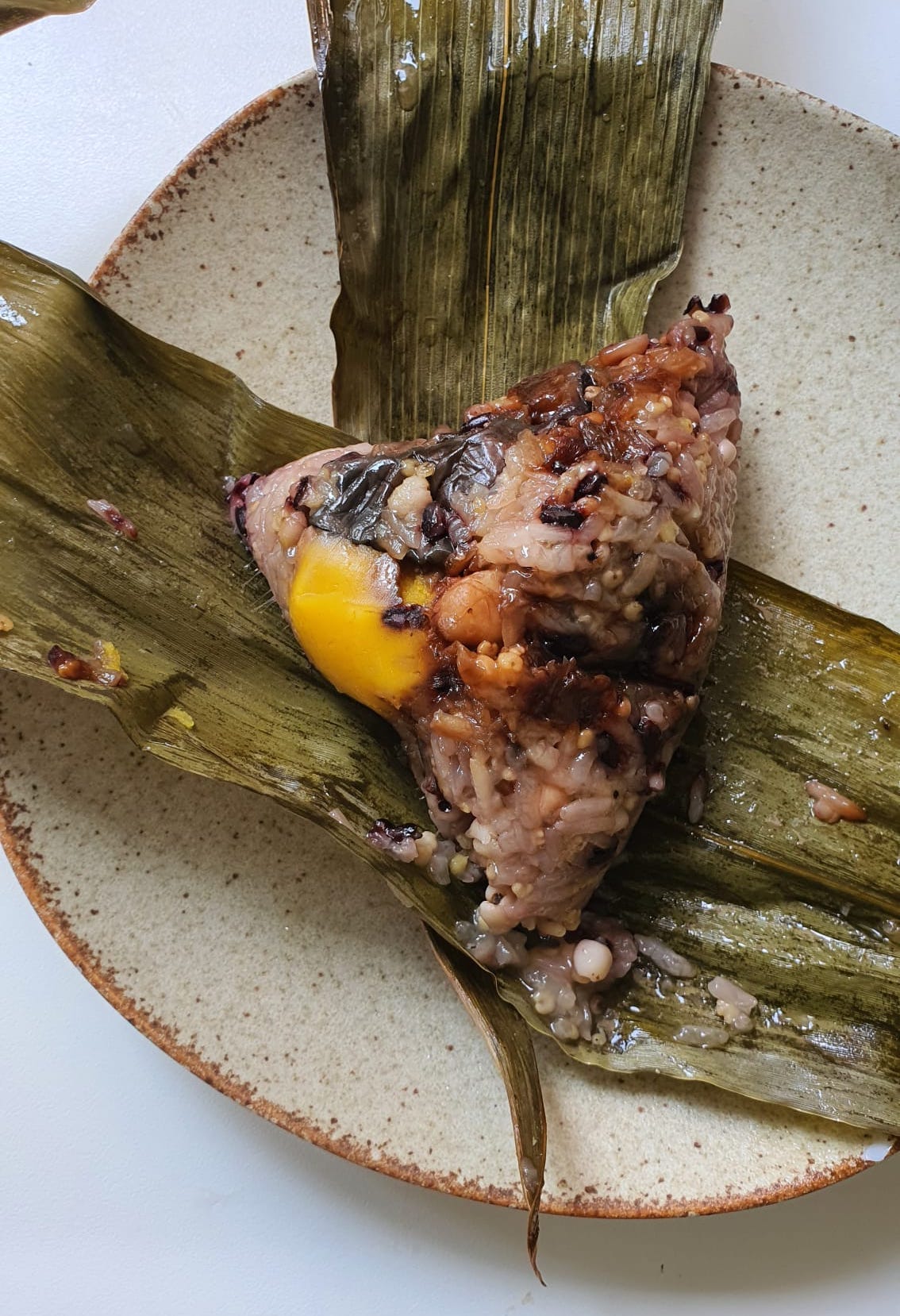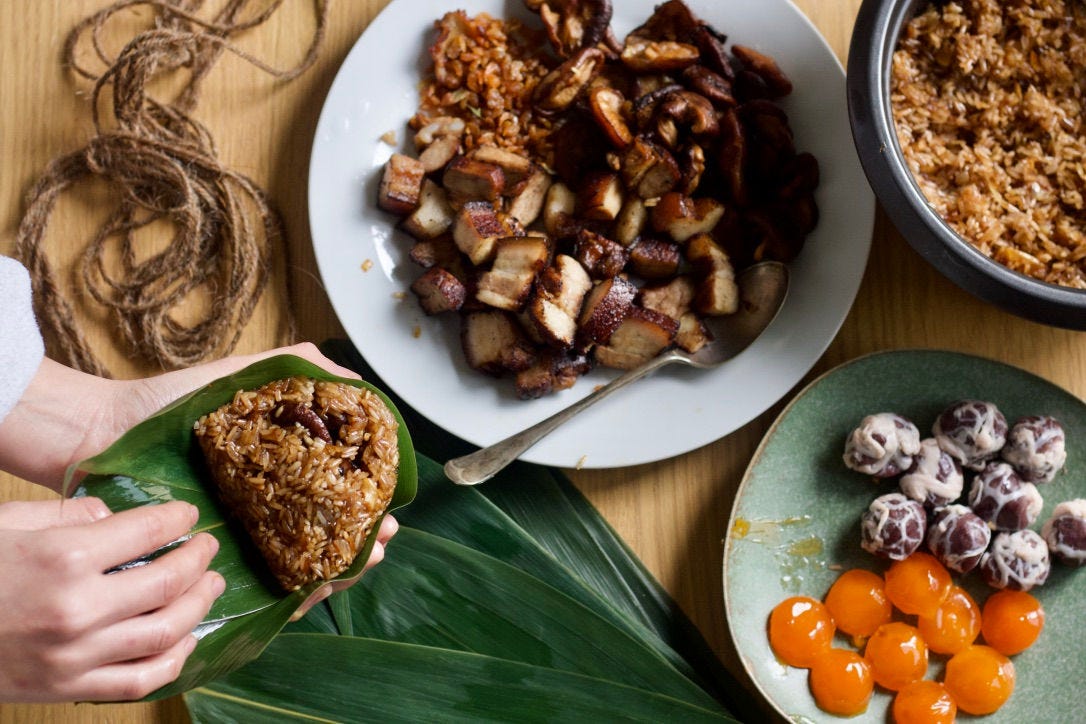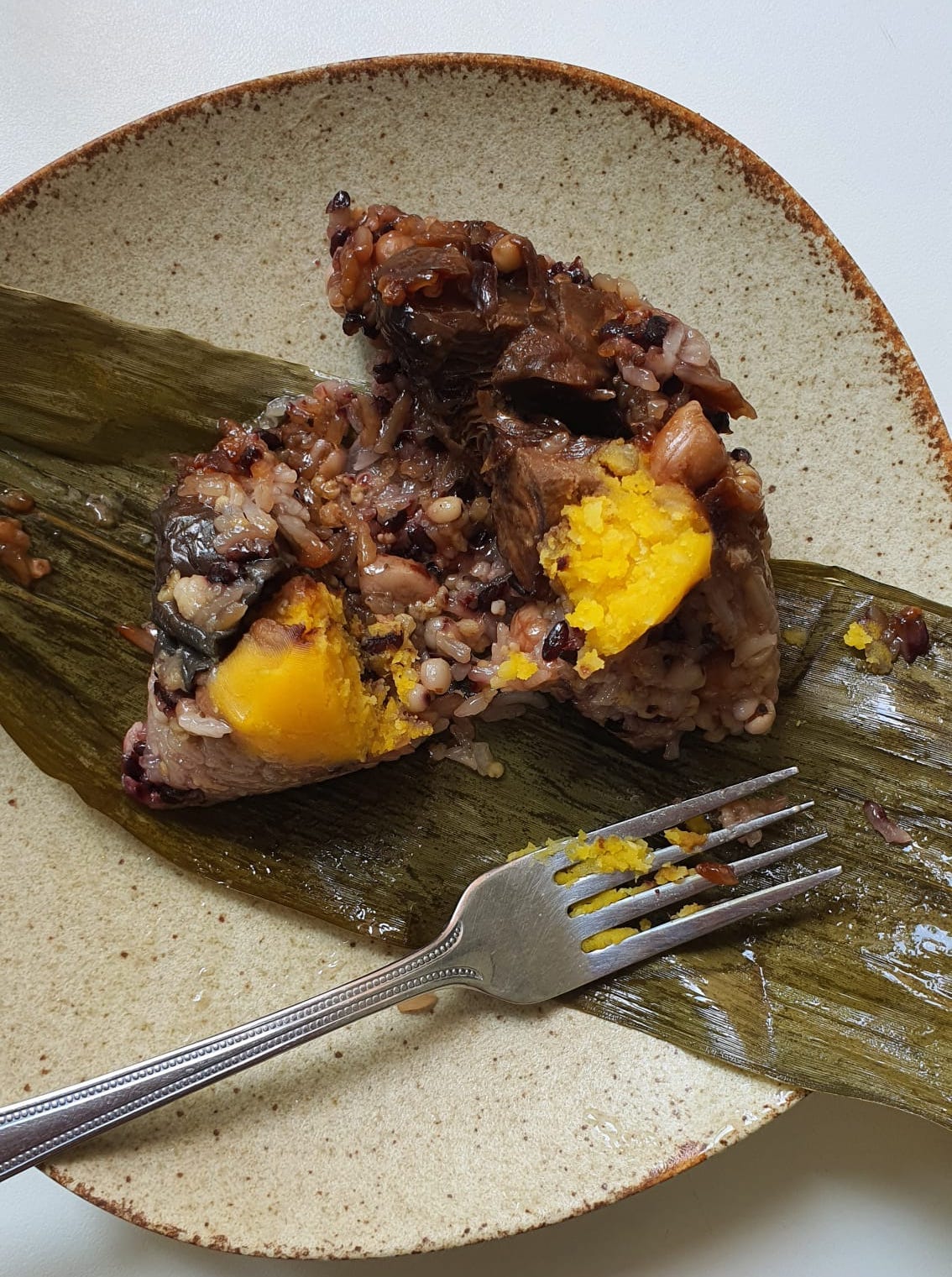A week or two ago, someone asked if I was going to make zòng zi 粽子 soon, and I thought, “Already? Is it that time of the year again?” For Singaporeans who are accustomed to living in perennial summer, the way we mark time is not by the ebb and flow of the seasons but through festival food. And even though it’s been more than 5 years since I moved abroad, I still feel more attuned to these food “seasons” than rhythms in weather. This time of the year is all about the preparing and sharing of leaf-wrapped glutinous rice dumplings with one another. Given their popularity, one might not expect that these have origins that stretch all the way back to 278 BC, when the beloved Chinese patriot Qu Yuan drowned in the Miluo River. Though the original intention of wrapping sticky rice in leaves was to distract fish from eating Qu Yuan’s body, this has evolved into an elaborate tradition with the incorporation of luxurious ingredients such as lor bak (soy-braised pork belly), dried shiitake mushrooms, and salted egg yolks into the dumplings.
The making of zòng zi is as time- and labour-intensive as it sounds - this is the sort of food item that gathers people not just in the eating, but also in the making of it. Each year, Wex’s grandmother prepares the filling components and soaks the glutinous rice in solitude before gathering her children to wrap the dumplings on a separate day. My mother-in-law once shared photos of this massive dumpling-making session with us through Whatsapp, and, even through the screen, it was such a potent image of food traditions being preserved and passed down from generation to generation. In such a context,
’ observations of the etymology of zòng zi 粽子 in Tiny Moons: A Year of Eating in Shanghai are especially astute and poetic, “On the left-hand side of [粽] is the radical, the part that indicates meaning, which here is 米, mi: uncooked or unhusked rice… Incidentally, 宗 on its own means ‘ancestor’, or lineage.”While zòng zi 粽子 is the term that most Chinese communities use, it is more common for Singaporeans to refer to them in Hokkien as zhang 粽 or bak zhang 肉粽 (meat dumpling). Because meat is synonymous with this dumpling, it never crossed my mind to attempt a vegan version until I came across the multigrain dumplings by
. It was creative in such a thoughtful way, with pumpkin serving as visual reminders of salted egg yolks’ bright pop in traditional bak zhang, and eggplant evoking the decadent fattiness of braised pork belly.My vegan multigrain dumplings
Wex’s grandmother makes two varieties of bak zhang. The first resembles conventional bak zhang except for a sphere of red bean paste; this sweet-savoury combination is the defining feature of Teochew-stye zhang 双拼肉粽. The second type that she makes is kueh zhang, or the style of glutinous rice dumplings that are traditional to the Peranakan community, where hand-chopped pork is flavoured with fermented yellow bean paste (taucheo) and ground coriander. (Taucheo is a contentious ingredient in kueh zhang: while some consider the addition non-traditional, there are also Peranakan cooks who add this to theirs.) Another characteristic of kueh zhang is the fragrance of pandan that it carries; this type of sticky rice dumpling is traditionally wrapped in large pandan leaves, not bamboo leaves.
My multigrain dumplings draw inspiration from both types of dumplings that my grandmother-in-law makes. I seared chunks of eggplant, like Jameson did, then briefly glazed them in taucheo and coriander powder - a hauntingly fragrant and salty-sweet combination. You have to taste this combination to know what I mean.
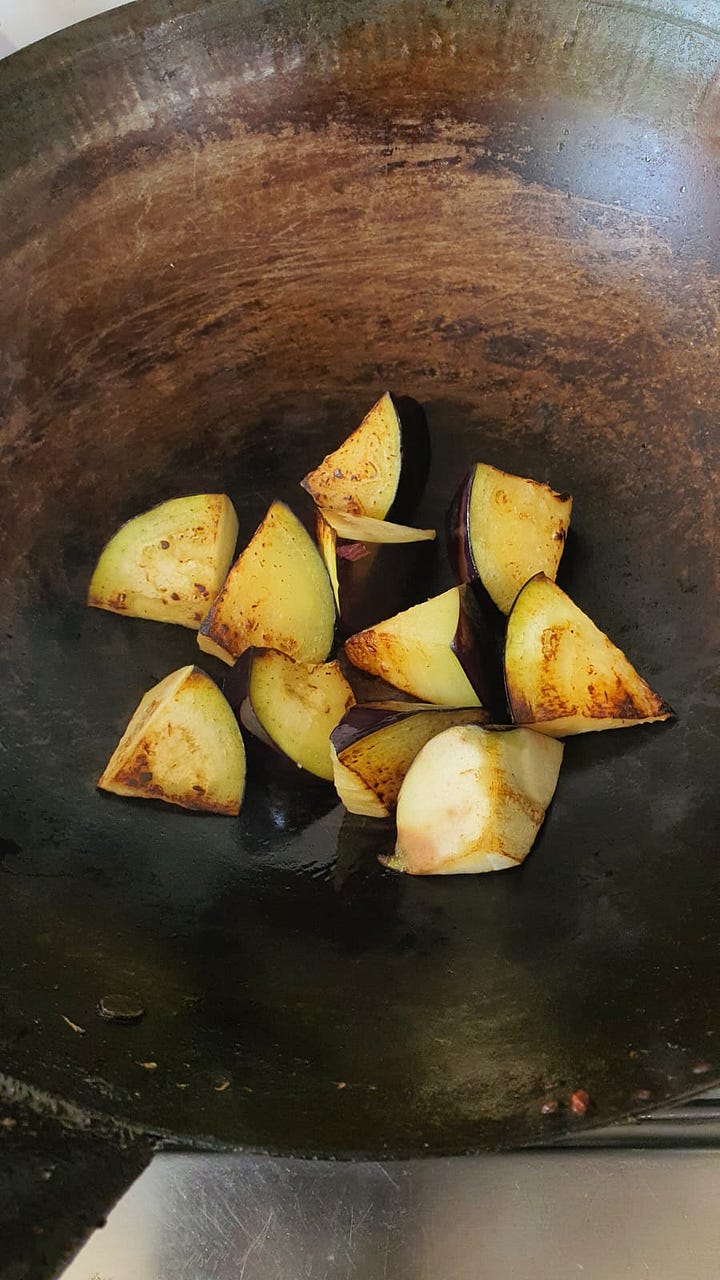
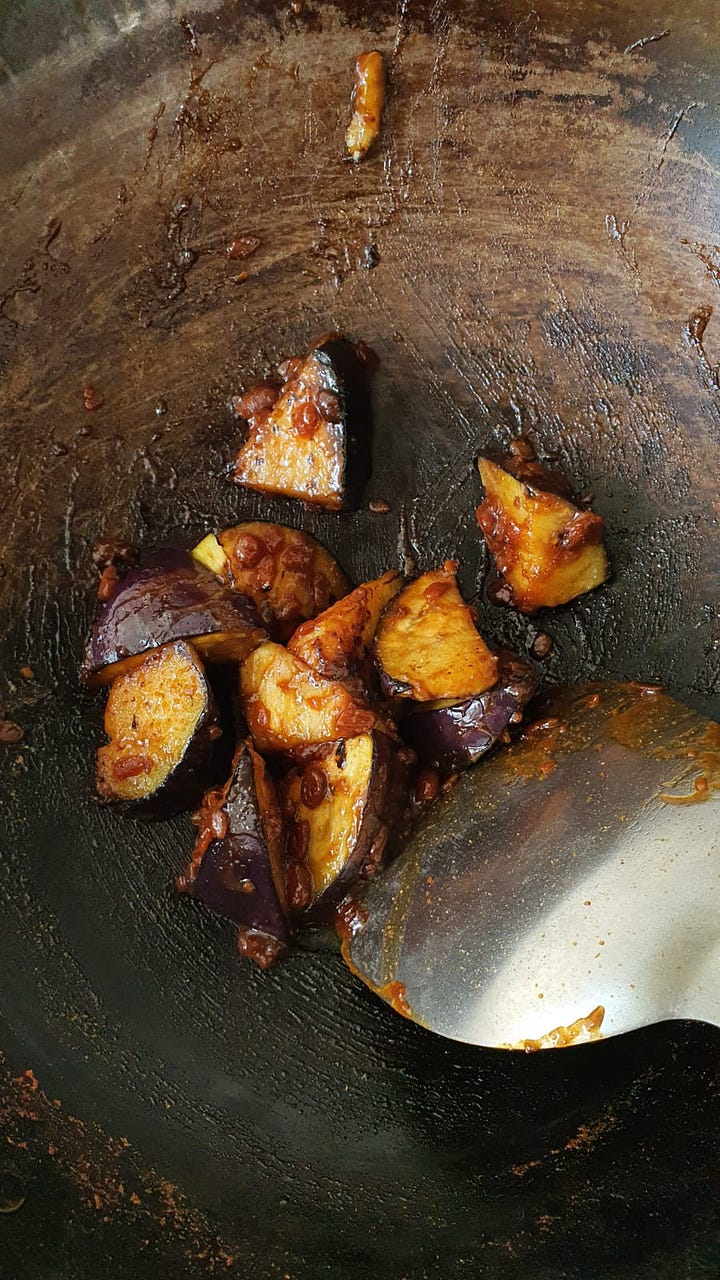
In place of the red bean paste in my grandmother-in-law’s bak zhangs, I used mung bean paste. The idea came from Lion Dance Cafe - it’s no secret that I’m a big fan of C-Y Chia and Shane Stanbridge’s work. I did an interview with them in my cookbook Plantasia and am always impressed by the way they weave C-Y’s Teochew heritage into the dishes on their menu. What caught my eye in their zhang was a sphere of mung bean paste, made by steaming mung beans and blending them with sugar and homemade shallot oil. I loved the way that it resembled a sphere of egg yolk, and added some pumpkin to mine to bring the paste closer to the colour of cooked yolks.
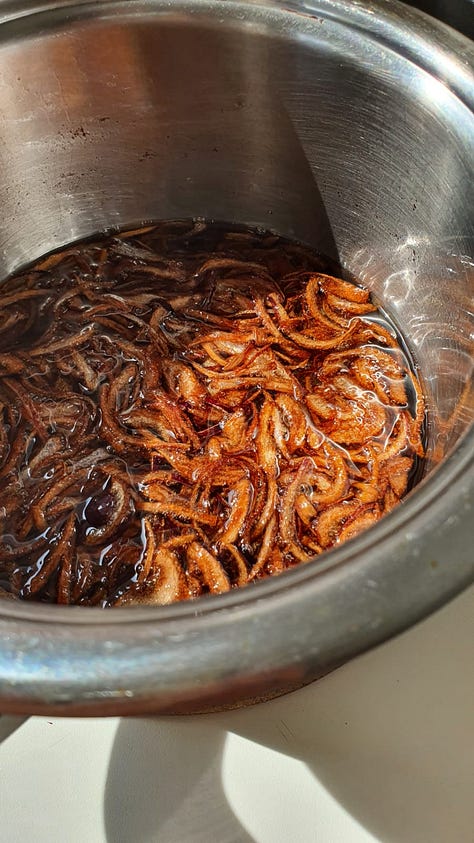
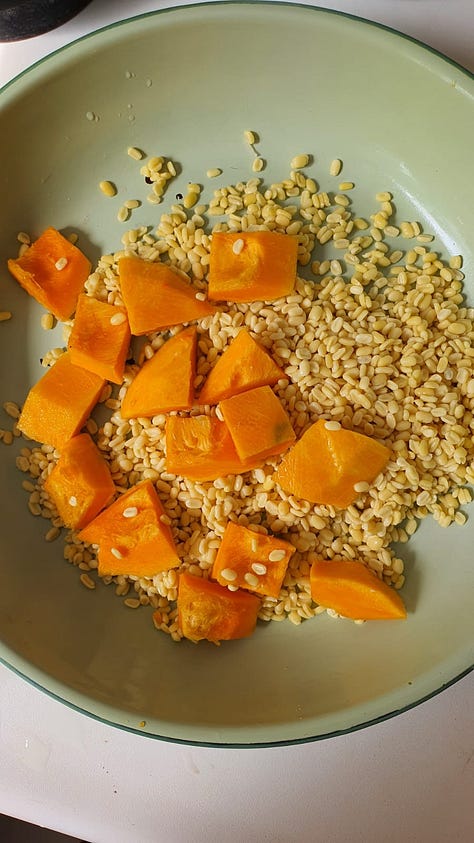
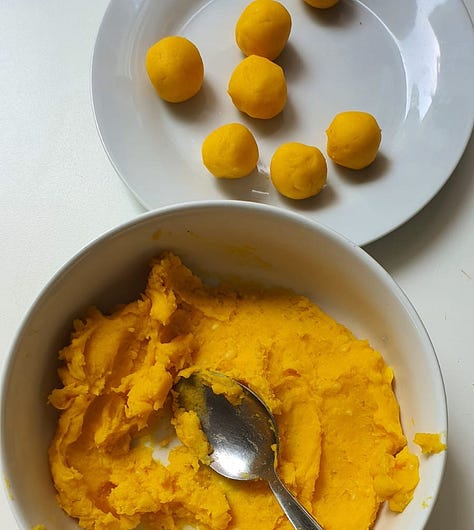
While the eggplant added unctuousness, I needed something satisfyingly chewy in the dumpling and, for that, I turned to tofu. One hack that I’ve learnt in recent years is to freeze, then thaw firm tofu - the freezing process creates ice crystals within the tofu that puncture the cell walls, so that, when thawed, the excess water drains out of the tofu to form a chewy, porous structure (look at the tunnels in the photo below!). I braised the tofu with dried shiitake mushrooms in dark soy, using my mother-in-law’s lor bak as a guide.
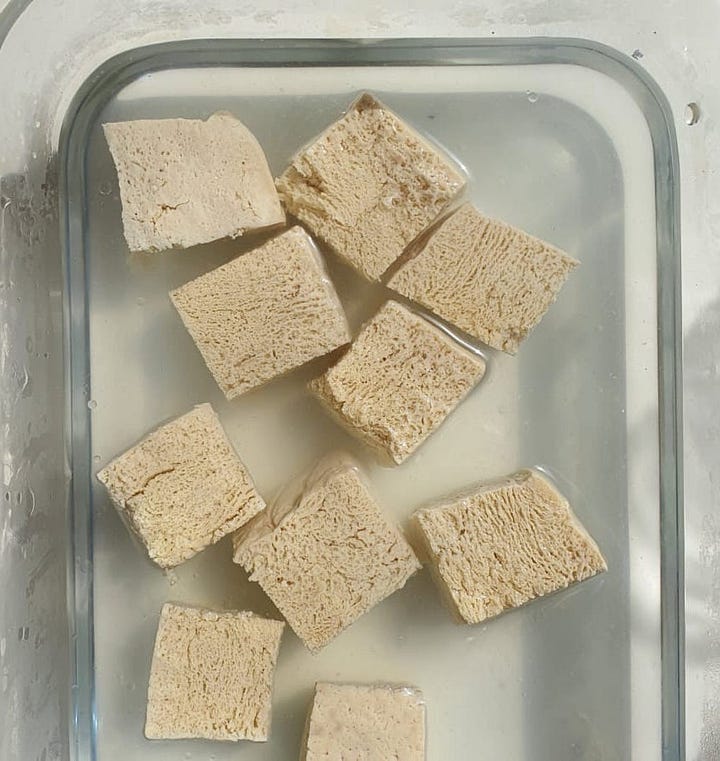

Before wrapping the rice mixture - raw peanuts, glutinous rice, purple rice, pearl barley, and millet - and filling components in the bamboo leaves, I slipped a section of pandan leaf into each parcel, as a hat-tip to kueh zhang.

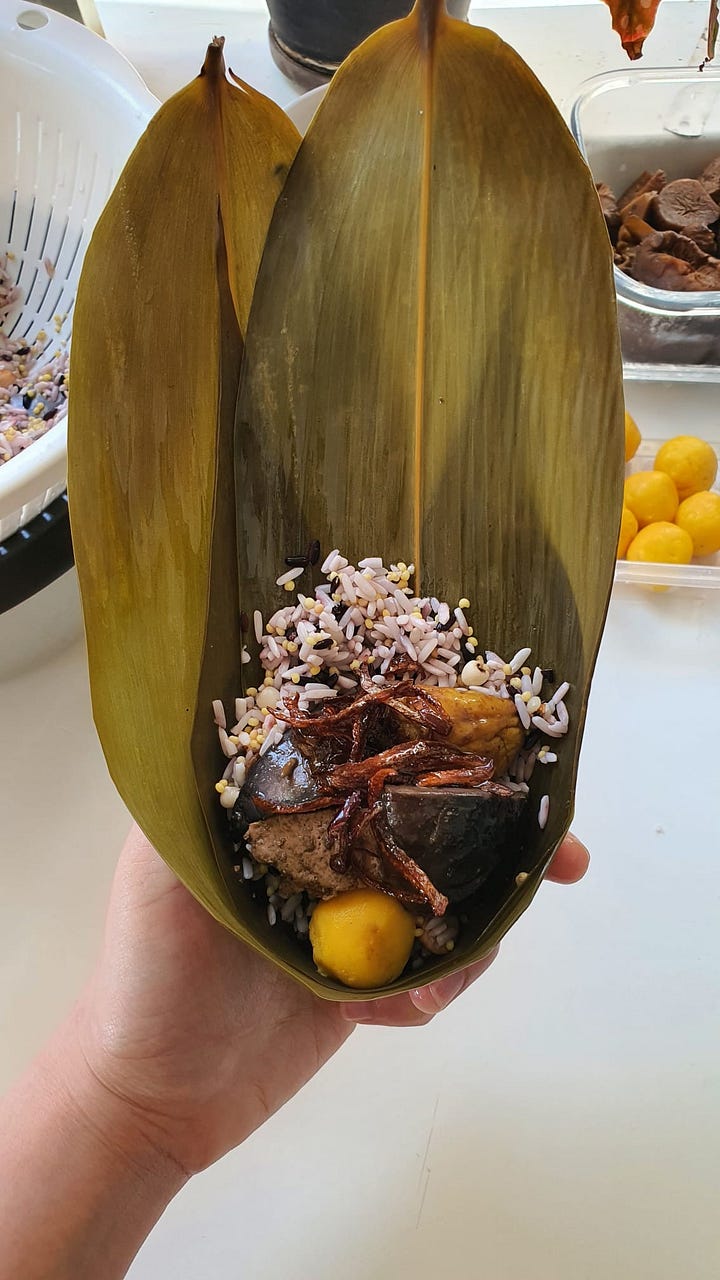
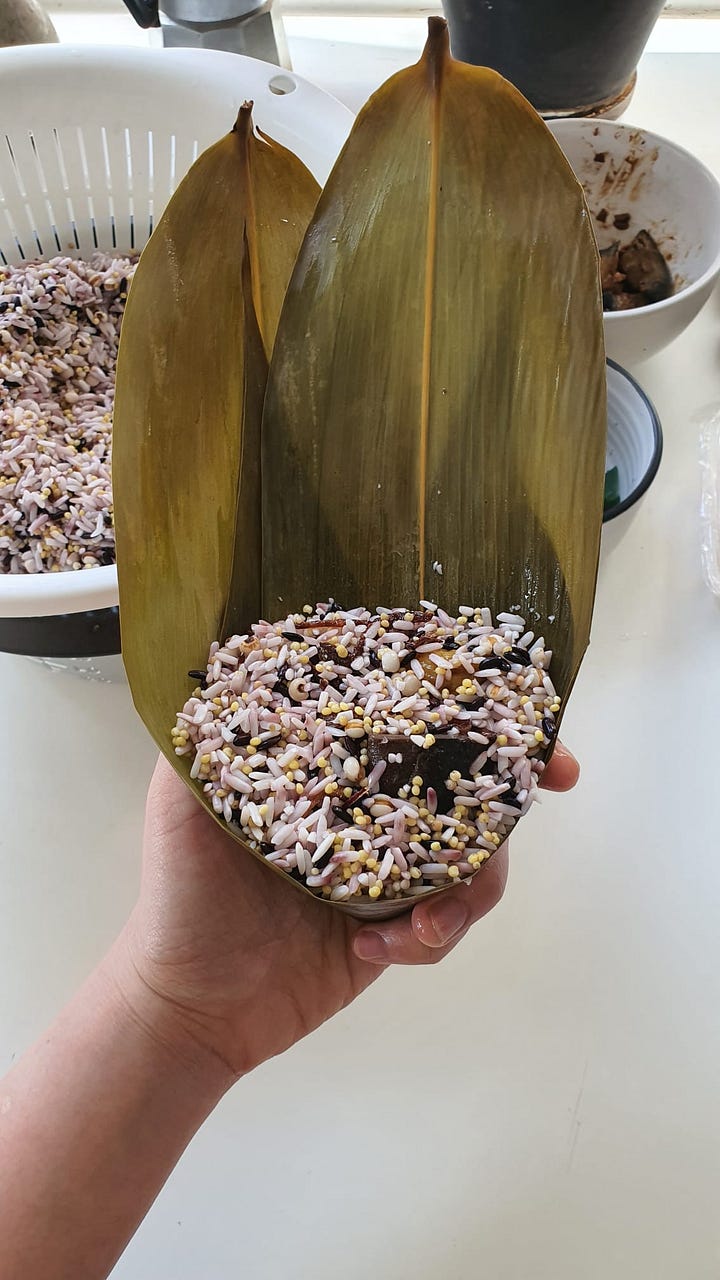

The results were dreamy. The mung bean spheres were, in particular, a triumph - they straddled the sweet-savoury boundary magnificently, had unexpected depth from the shallot oil, and captured the powdery texture and visual attributes of cooked yolks. The coriander seed-scented eggplant chunks and the subtle perfume of pandan brought kueh zhang to mind, while the braised mushrooms and tofu provided satisfying chew. The flavours and textures were so familiar and not once did I think: this is such a good dupe. The dumpling was wonderful and unique on its own.
Multigrain glutinous rice dumplings
MAKES 10 DUMPLINGS




